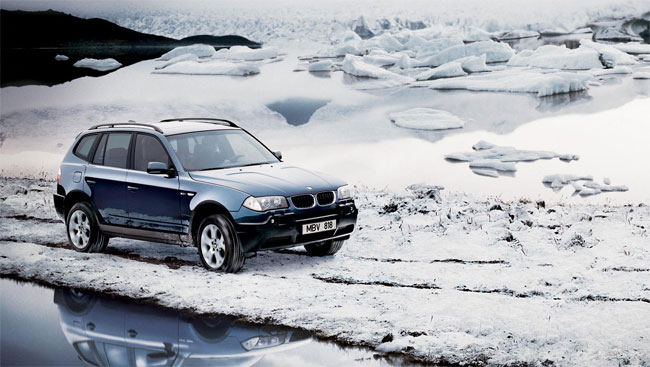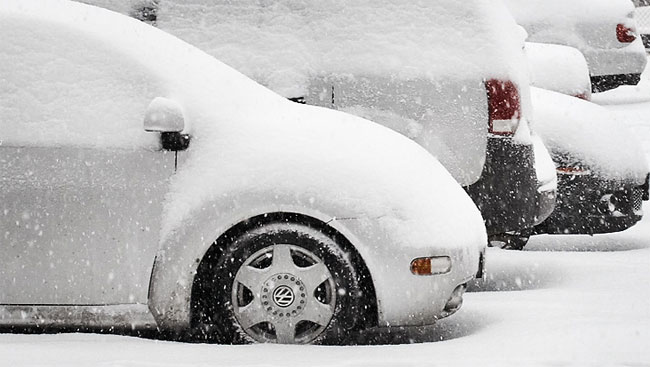Winter Car Care tips, Snow Tires and Oil changes
Seasonal oil changes
Engine oils’ main function is to lubricate your engine and carry away heat from moving parts, thus stabilizing the engines temperature. As we all know, liquids tend to get thinner as the temperatures get higher and engine oil does the same. Unfortunately it starts to lose some of its lubricating properties the thinner and hotter it gets. Under normal conditions your manufacturers recommended specified oil should do the job. But, when you start to push the limits or encounter really high temperatures sometimes, then different oil is required.
So, what does it mean to push the limits of your engine? Generally running heavier loads, pulling a trailer or both will tend to make an engine run hotter in summer months. To combat the extra stress of the engine in the hotter months thicker oil is generally the solution. The thicker oil will not break down when the engine temperature increases quickly and by not getting thinner, the oil lubricates better slowing down the friction of the metal surfaces lessening the wear on you engine. So, if your manufacturer recommends 10W30 for regular driving, 10W40 is better for higher temperatures the engine may encounter due to weather or vehicle loads.
In seasonable winter weather, again your manufacturer’s recommended oil is fine, but if you experience extreme cold, thinner oil may be what is needed. There are two reasons for this. First is that cold oil is thick oil and some of the ingredients of the oil give it a molasses-like thickness. This thick oil has tendency to slow down your start-up in very cold weather, putting extra stress on the starter.
If this is not enough, the second good reason for thinner oil is that when it is cold, oil doesn’t flow about you engine that well. When oil is not flowing about your engine and the engine is moving, your engine wears much faster. Some experts say that cold start friction within the engine is one of the biggest factors in the wearing out of parts within your engine.

The solution as you might suspect is the use of thinner oil in winter. So if 10W30 is recommended, 5W30 or 0W30 are thinner oils that will help your engine start easier and lubricate faster.
As you may have noticed, the last number defines thicker oil in this case 30 to 40 and the lower number is how much thinner it works in cold weather. So a 0W30 oil flows better in the cold than a 10W30. Rule of thumb is the lower the first number, the better flow in cold, while higher the number at the end is the thickness in the heat.
If all this sounds confusing, well it can be. The solution if you’re willing to pay more for your oil is synthetic oil. How synthetic oil does this is a long and complex chemical explanation, but in simple terms, this oil flows better in both cold and hot weather as well as doing a better job cooling the moving parts.
Just remember that changing your oil every 5,000 km is essential, and if you are in really dirty, dusty conditions, oil will help carry away foreign particles within your engine. But, if you pay attention to the kind of stress you put on your engine and adjust your oil accordingly, you will definitely get much more life out of it over the long haul!
Snow Tires & Rims

All-season tires are generally fine in moderate winters days. Unfortunately, they are just not as good in the real cold and snow, as snow tires offer better traction in the cold as they are made with a rubber compound that stays softer allowing the tire better grip on cold surfaces.
Keep in mind that many cars come with aluminum alloy “mag” wheels, which are factory coated but with repeated exposure to winter conditions, they will corrode and look bad and eventually leak air and affect your vehicle’s resale value.
Many people ask ‘Why buy four snow tires?’ The reason is four snow tires will track better in the cold weather instead of two, as the grip is equal front and rear. Any tire person will also point out, four matching tires are safer than different types especially mixing two different rubber compounds like a winter and summer tire.
When it comes to buying snow tires, all models are pretty good for what they’re expected to do. If you don’t drive much and travel short distances, a lower priced tire will probably suit the bill. Those of you who travel to the slopes and commute longer distances to work, I would definitely go for better quality tires. Trust me, I have driven in poor snow conditions with high quality snow tires and I can tell you from experience you get what you pay for.
Prices for the same tire will vary from among retailers and it’s worth shopping around for tires. I have seen price variations for the same tire range up to $40. Another consideration at time of purchase is to find out if mounting and balancing is included in price of the tires and rims. This is where you might find a deal if the tire is a little more expressive and your dealing with a smaller tire shop, who may add mounting and balancing for free.
